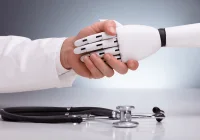In recent years, healthcare systems around the globe have been undergoing a significant transformation. Traditionally, healthcare focused on treating illnesses after they arose. However, the emergence of predictive and preventive healthcare is changing this reactive approach into a proactive one. By leveraging advanced technologies and data analytics, healthcare providers now have the tools to predict and prevent diseases before they fully manifest, improving patient care, boosting operational efficiency, and reducing overall costs. This article explores the transition from reactive "sick care" to proactive healthcare, emphasising the growing role of predictive analytics in shaping the future of healthcare.
The Shift from "Sick Care" to Proactive Healthcare
For many years, healthcare systems operated on a model where treatment only began after symptoms emerged. While effective to a degree, this reactive approach led to increased costs, delayed diagnoses, and poorer patient outcomes. The term "sick care" aptly describes this method, as care was primarily provided post-diagnosis rather than focusing on preventing diseases in the first place.
In contrast, predictive healthcare aims to anticipate medical issues before they occur. Many countries, including Sweden and the Netherlands, have been early adopters of this model, integrating preventive measures like screenings, lifestyle counselling, and vaccination programmes into their systems. These efforts have demonstrated a clear shift from simply treating illnesses to preventing them, improving health outcomes and reducing healthcare burdens. As more countries follow suit, the "sick care" approach gradually gives way to a system where prevention is prioritised, leading to more efficient healthcare delivery and better patient experiences.
The Importance of Preventive Healthcare
Preventive healthcare plays a critical role in the shift from reactive to proactive healthcare. It focuses on preventing diseases through health education, regular check-ups, and interventions that address potential health risks early. This approach includes promoting healthy lifestyles, offering vaccination programmes, and conducting routine screenings to detect conditions before they become severe.
One of the most significant advantages of preventive healthcare is its ability to reduce the prevalence of chronic diseases, such as heart disease and diabetes, which are leading causes of mortality worldwide. By identifying risk factors early, healthcare providers can offer tailored advice on diet, exercise, stress management, and smoking cessation, all of which contribute to a healthier population. In countries like Sweden, where preventive measures are well-integrated into the healthcare system, earlier detection of chronic diseases has resulted in improved patient care, longer life expectancies, and reduced healthcare costs. Preventive healthcare not only saves lives but also strengthens the relationship between patients and providers, fostering a sense of empowerment and health literacy in individuals.
Predictive Healthcare: The Power of Data and Technology
While preventive healthcare focuses on minimising risk factors, predictive healthcare takes this concept a step further by utilising data analytics, machine learning, and artificial intelligence to anticipate future health outcomes. Predictive healthcare can identify patterns in vast amounts of data, allowing healthcare providers to foresee potential issues before they arise. This proactive approach helps deliver more personalised care and optimise healthcare resources.
The use of predictive analytics can significantly improve patient outcomes. For example, it can identify patients who are at risk of developing specific conditions, enabling early intervention strategies that reduce the likelihood of hospital readmissions or complications. Predictive tools also enhance operational efficiency by forecasting patient volumes and resource needs, allowing for better staffing, reduced wait times, and cost savings. Moreover, predictive analytics can detect fraud and optimise resource allocation, ensuring healthcare systems operate more effectively and sustainably.
Conclusion
The future of healthcare lies in its ability to shift from a reactive "sick care" approach to one that emphasises prevention and prediction. By integrating preventive healthcare measures such as screenings and lifestyle counselling and utilising predictive analytics to anticipate future health issues, healthcare systems can significantly improve patient care while reducing overall costs. Countries that have embraced this model, such as Sweden and the Netherlands, demonstrate the potential for enhanced outcomes and operational efficiency.
As healthcare evolves, predictive technologies and data analytics will become even more sophisticated, offering new ways to personalise care and optimise resource management. Integrating artificial intelligence and machine learning into healthcare promises to revolutionise the industry further, ensuring that care is proactive, precise, and efficient. Ultimately, this shift towards preventive and predictive healthcare will lead to healthier populations, improved patient experiences, and more sustainable healthcare systems for future generations.
Source: HealthCareTransformers
Image Credit: iStock







